Hamburg, 29 May 2023: With Germany recording a recession this year, the demand for goods is expected to slow down in the coming peak season, contributing to a global trade slowdown.
The further decline in consumer spending in the coming months will have a negative impact on peak season demand coming from Europe.
“We anticipate that the recession now in Germany will reduce the economic activity resulting from dropping consumer demand for goods and services, which will in turn impact the peak season demand this year.” predicted Christian Roeloffs, cofounder and CEO, Container xChange, an online marketplace and operating infrastructure for container logistics.
“Reduced consumer demand and economic activity in Europe can lead to decreased imports, affecting export-dependent economies. This can result in a slowdown in global trade and contribute to a broader economic downturn.” added Roeloffs.
Amidst the current challenges posed by rising inflation and the subsequent increase in the cost of living, Europe and UK have witnessed labour strikes taking place this year across several European countries. Countries such as France, Portugal, Greece, Germany, and the Netherlands have experienced such strikes, causing disruptions at ports and significantly impacting the smooth flow of cargo movements.
“The consequences of these strikes have reverberated through the transportation and logistics sector, particularly at ports, which are vital hubs for global trade. Disruptions in cargo movements can lead to delays, increased costs, and logistical challenges for businesses relying on efficient supply chains. It further underscores the interconnectedness of various economic sectors and the importance of stable labor relations for sustained economic growth.” commented Roeloffs on the topic of industrial unrest in form of labour union strikes. The demand has already dipped if we look at the port throughput in Hamburg, Rotterdam and Antwerp.
All three ports announced declines in throughput over the three-month period (January – March 2023). The port of Rotterdam posted an 11.6 percent decline in container volume to 3.2 million TEU, a trend that started last year due to the elimination of volumes to and from Russia. Antwerp-Bruges handled 3.1 million TEU in the first quarter, a 5.7 percent drop that was led by a nearly two-thirds decline in Russia-related cargo.
Port of Rotterdam Reflects Declining Asian Imports (-14.2% in TEUs) amidst stock accumulation and inflation-driven demand drop
“As the recession takes hold, it is expected to have a significant impact on labour demands and inflation, exacerbating the already declining consumer demand. This, in turn, is likely to lead to negative retail inventory refilling throughout Europe. This will also have a negative impact on exports from Asia.” commented Roeloffs.
Container Availability in Europe
In the year 2021, ports in Europe witnessed a rise in values between week 9 to week 21 (March–May). Cyclic in nature, this was owing to a rise in the number of cargo-filled containers reaching these ports soon after the Chinese New Year until May end, as the retailers restocked heavily preparing for the peak season. This trend did not mirror in 2023. Clearly validating that the inventory replenishment was flat in these months in 2022 and in 2023.
This could have a number of reasons. One, the invasion of Russia on Ukraine. The second, is the rising inflation and recession. And third, the resulting recessionary behaviours by the retailers and the consumers which leads to a slower trade, amongst many other effects.
The CAx graphs below showcase the clear references from above.
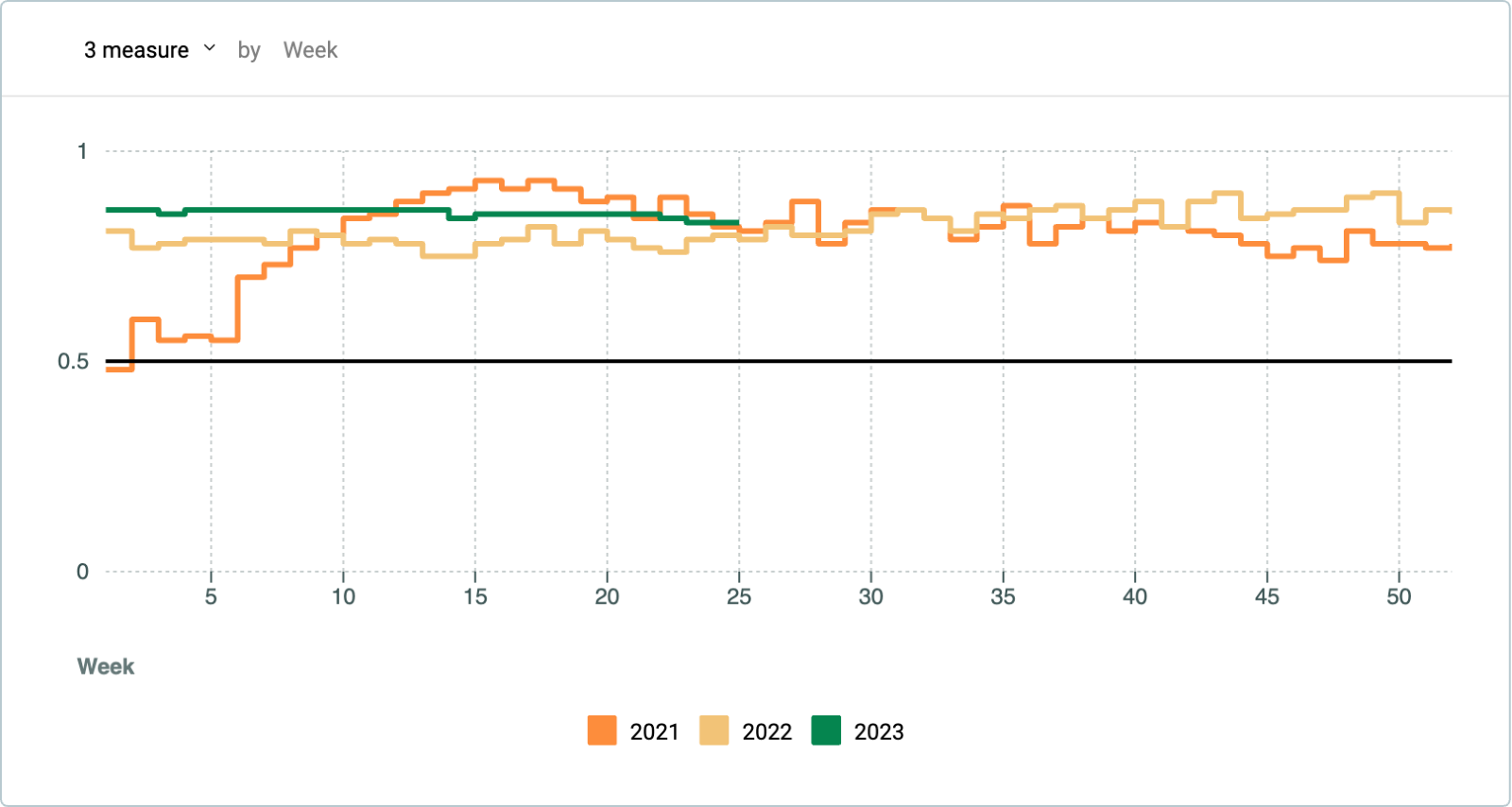
Hamburg CAx graph for 20 ft DC
Rotterdam CAx graph for 20 ft DC
Antwerp CAx graph for 20 ft DC
Container prices in Europe
We witness a general decline in the average container prices in Europe for 20 ft DC, while the prices for 40 ft HC have been relatively stable at the key ports. The trend is visible in the graphs below.
Average container prices for 40 ft HC have not declined in May across key ports in Europe
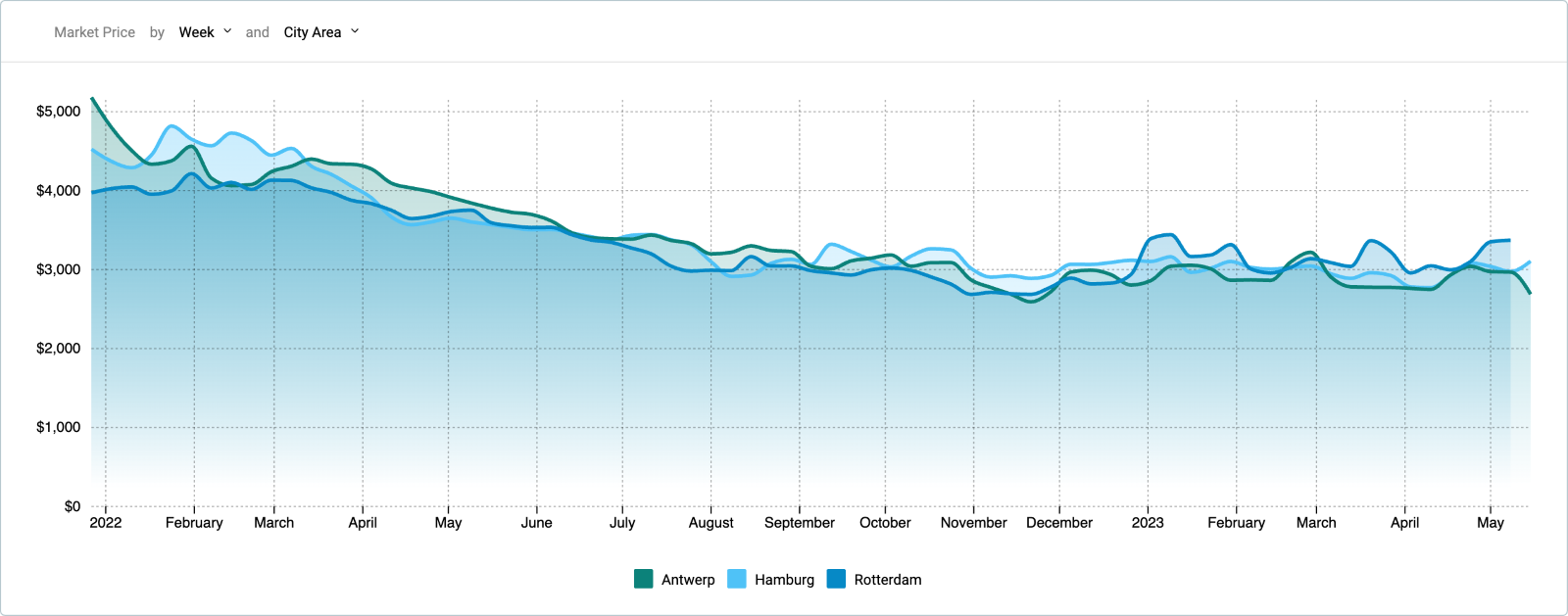
Average container prices chart 40 ft High Cube_brand new
Average container prices for 20 ft DC continue to decline in May across key ports in Europe
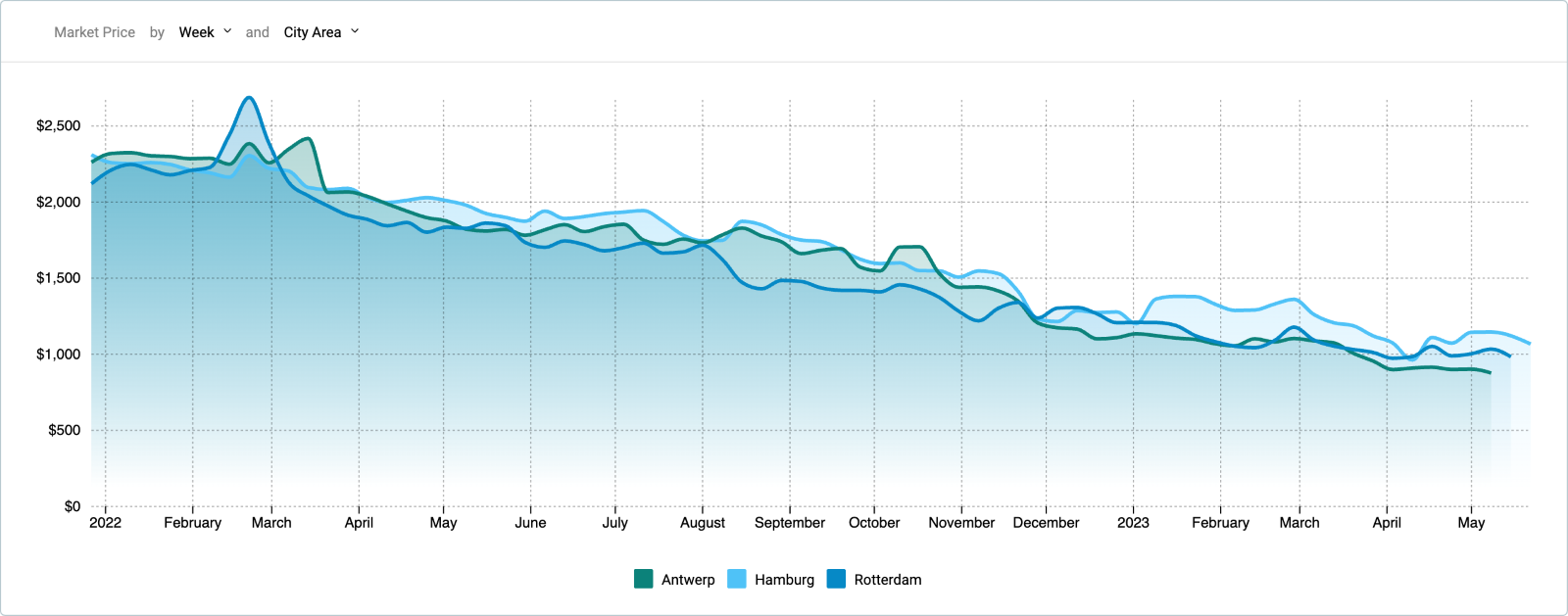
Average container prices chart 20 ft DC cargo worthy

In 2023, the average container prices for 20ft and 40ft containers are down to almost half of what they were in 2021 when the demand for containers was at its peak.
The opinions expressed herein are the author's and not necessarily those of The Xinde Marine News.
Please Contact Us at:
media@xindemarine.com


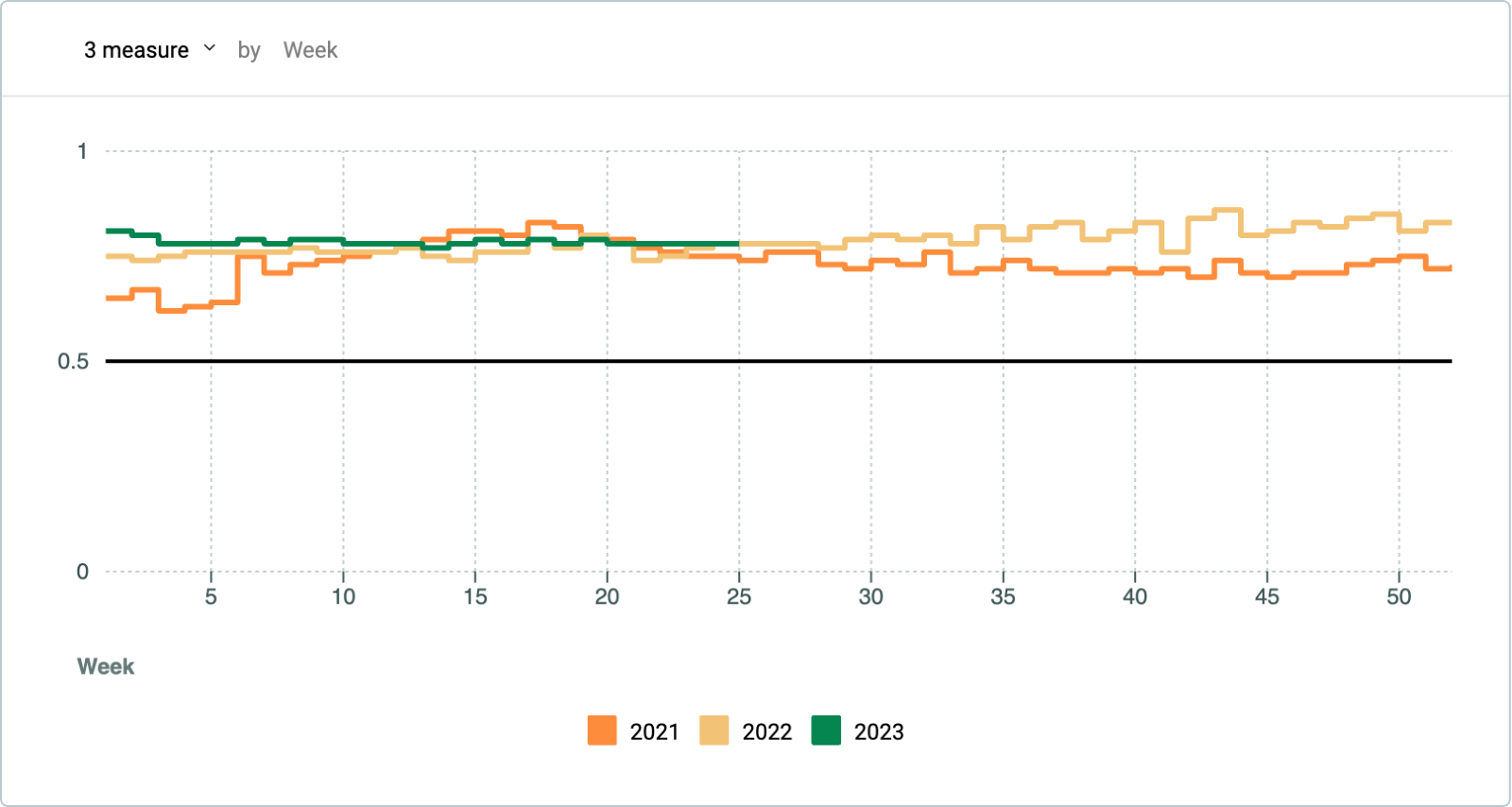
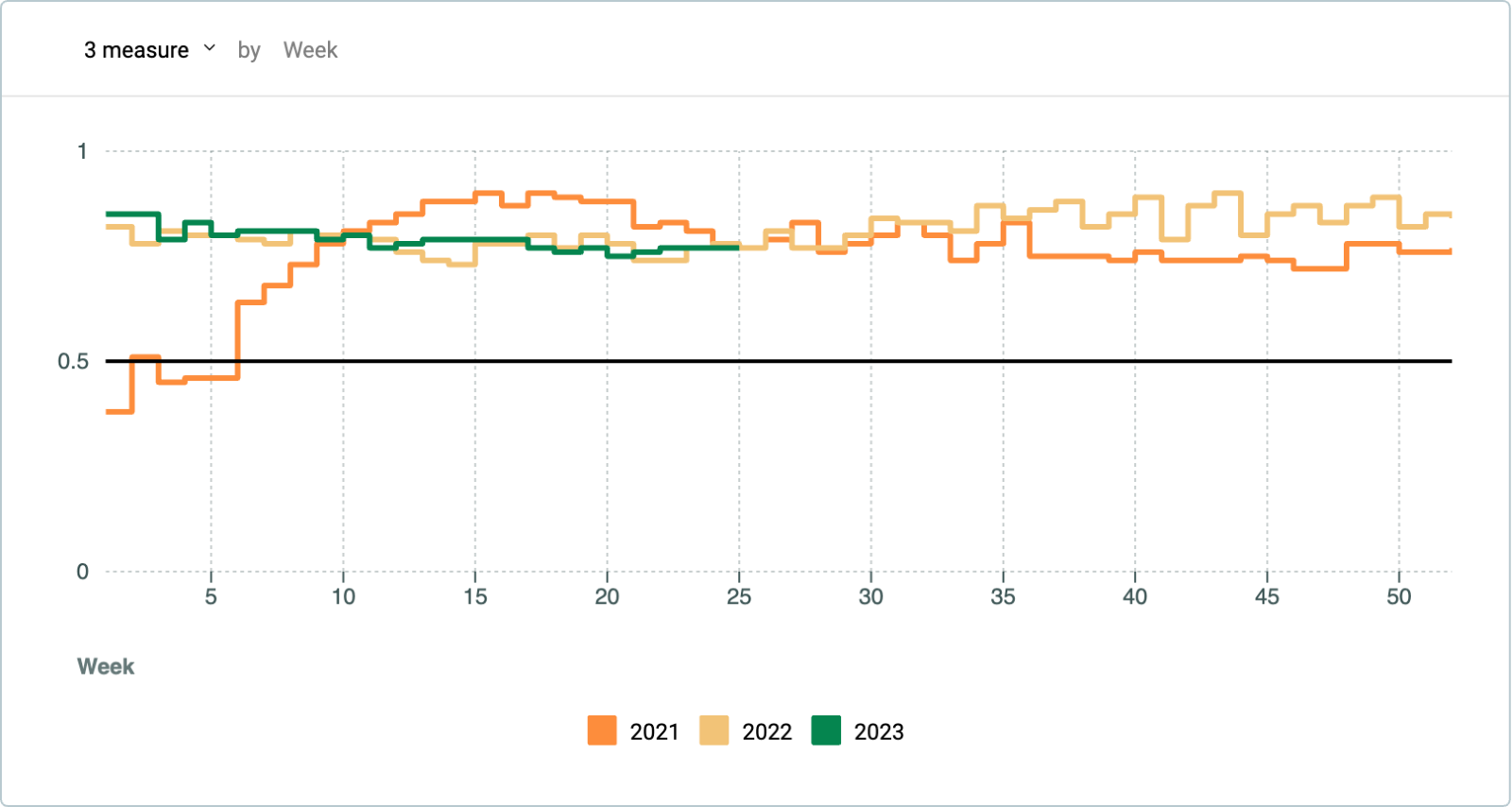



 Ningbo Containerized Freight Index Weekly Commentar
Ningbo Containerized Freight Index Weekly Commentar  Ningbo Containerized Freight Index Weekly Commentar
Ningbo Containerized Freight Index Weekly Commentar  Ningbo Containerized Freight Index Weekly Commentar
Ningbo Containerized Freight Index Weekly Commentar  BIMCO Shipping Number of the Week: Bulker newbuildi
BIMCO Shipping Number of the Week: Bulker newbuildi  Ningbo Containerized Freight Index Weekly Commentar
Ningbo Containerized Freight Index Weekly Commentar  Ningbo Containerized Freight Index Weekly Commentar
Ningbo Containerized Freight Index Weekly Commentar